



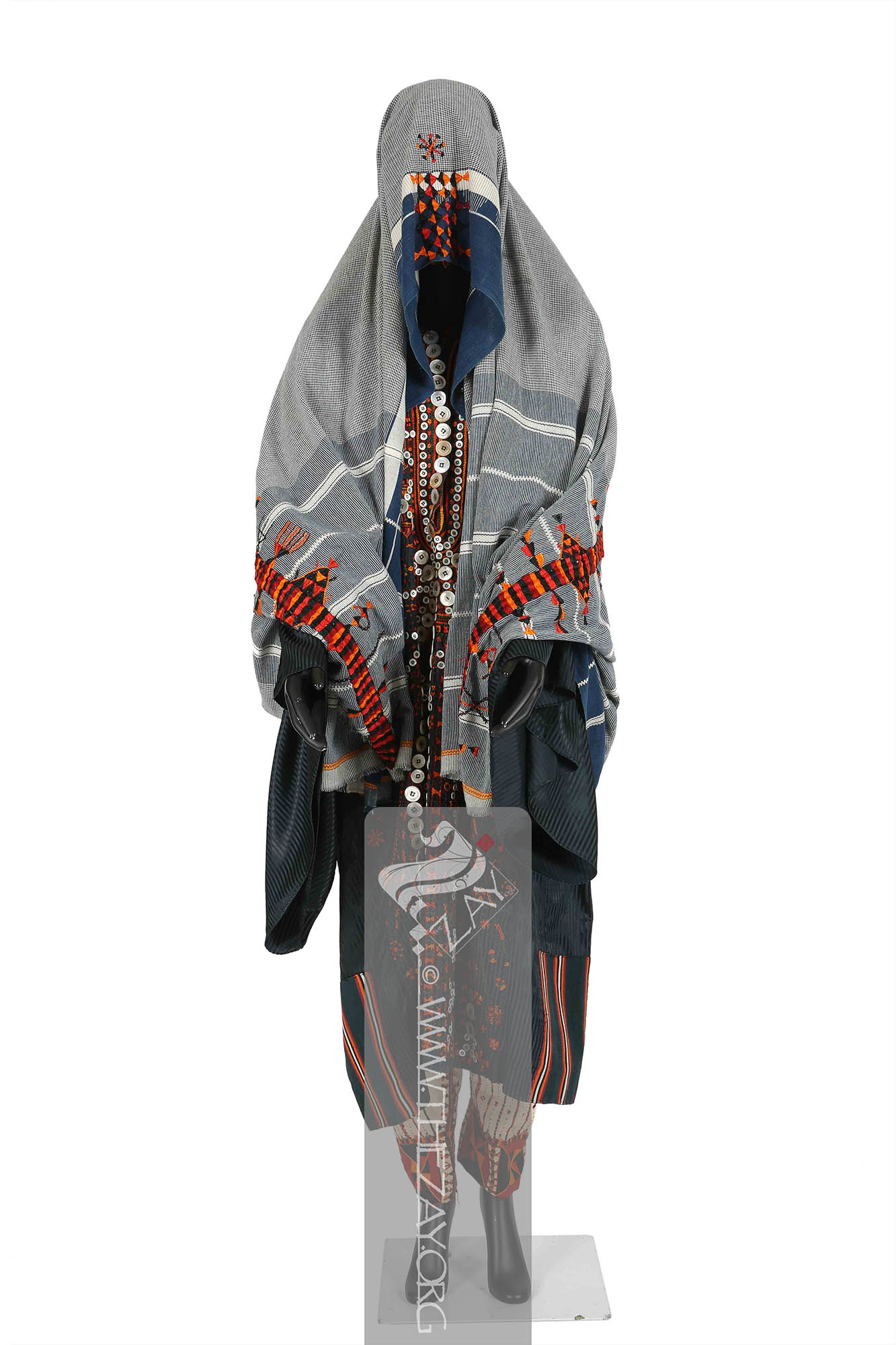
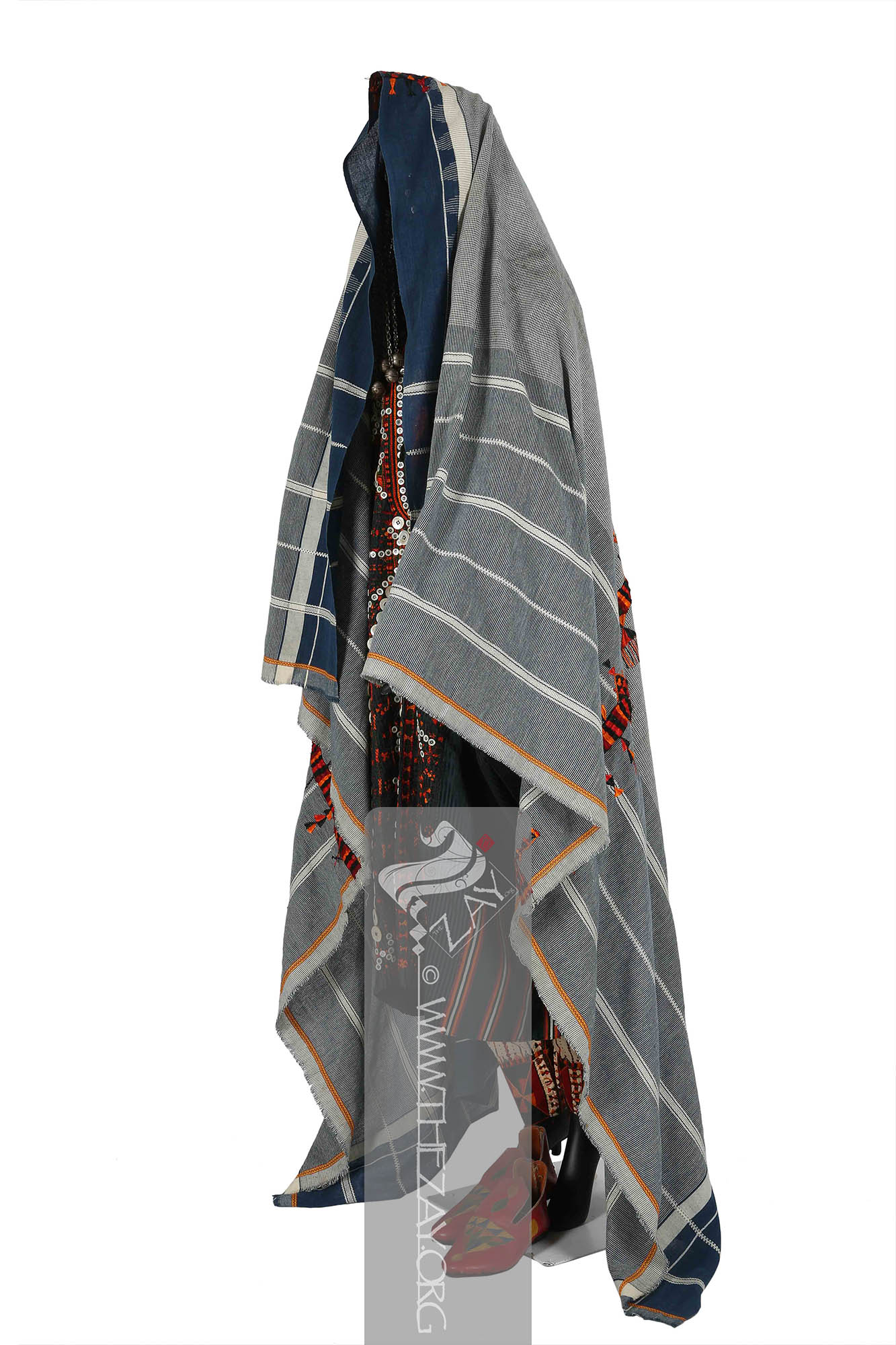
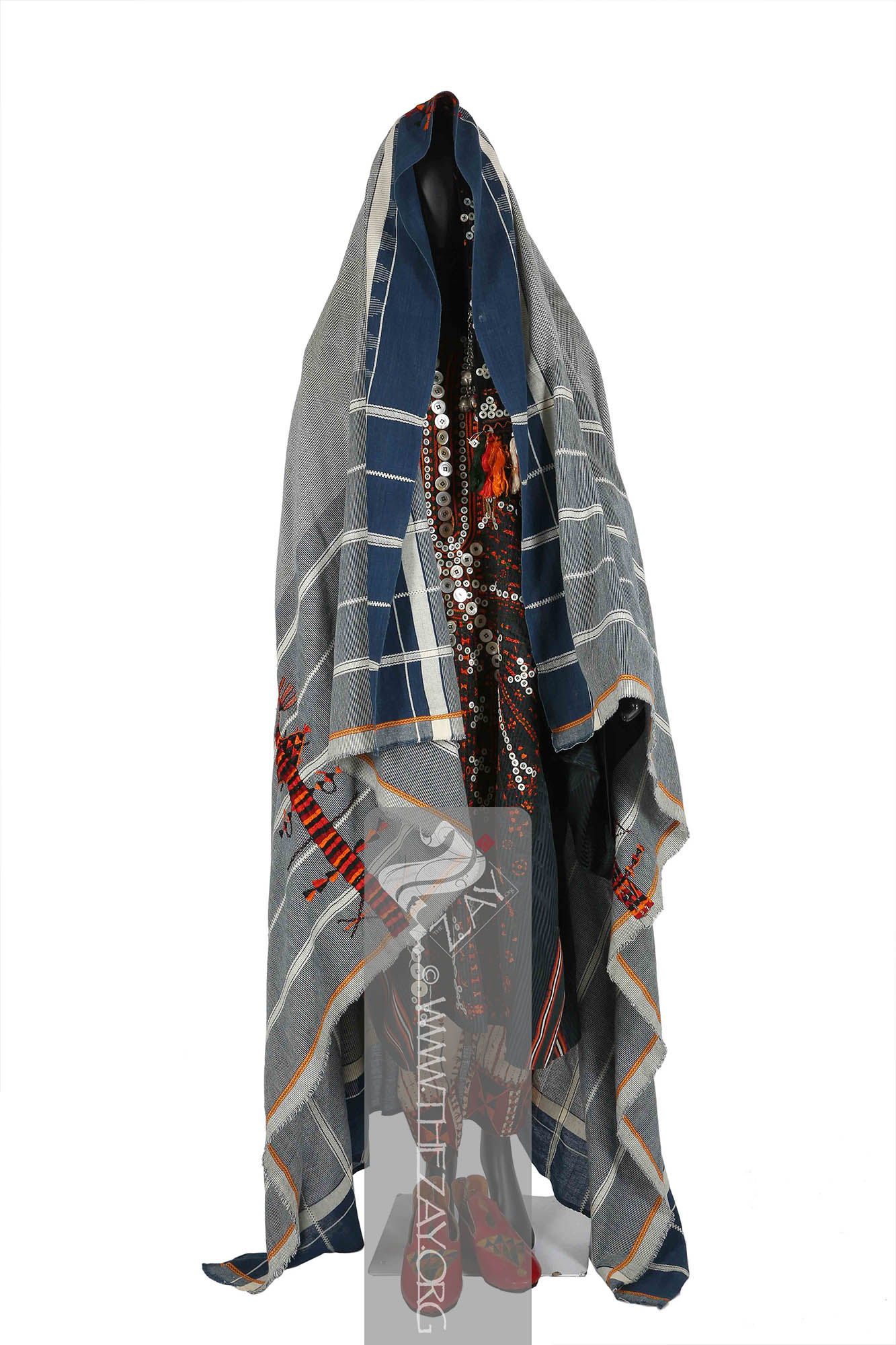
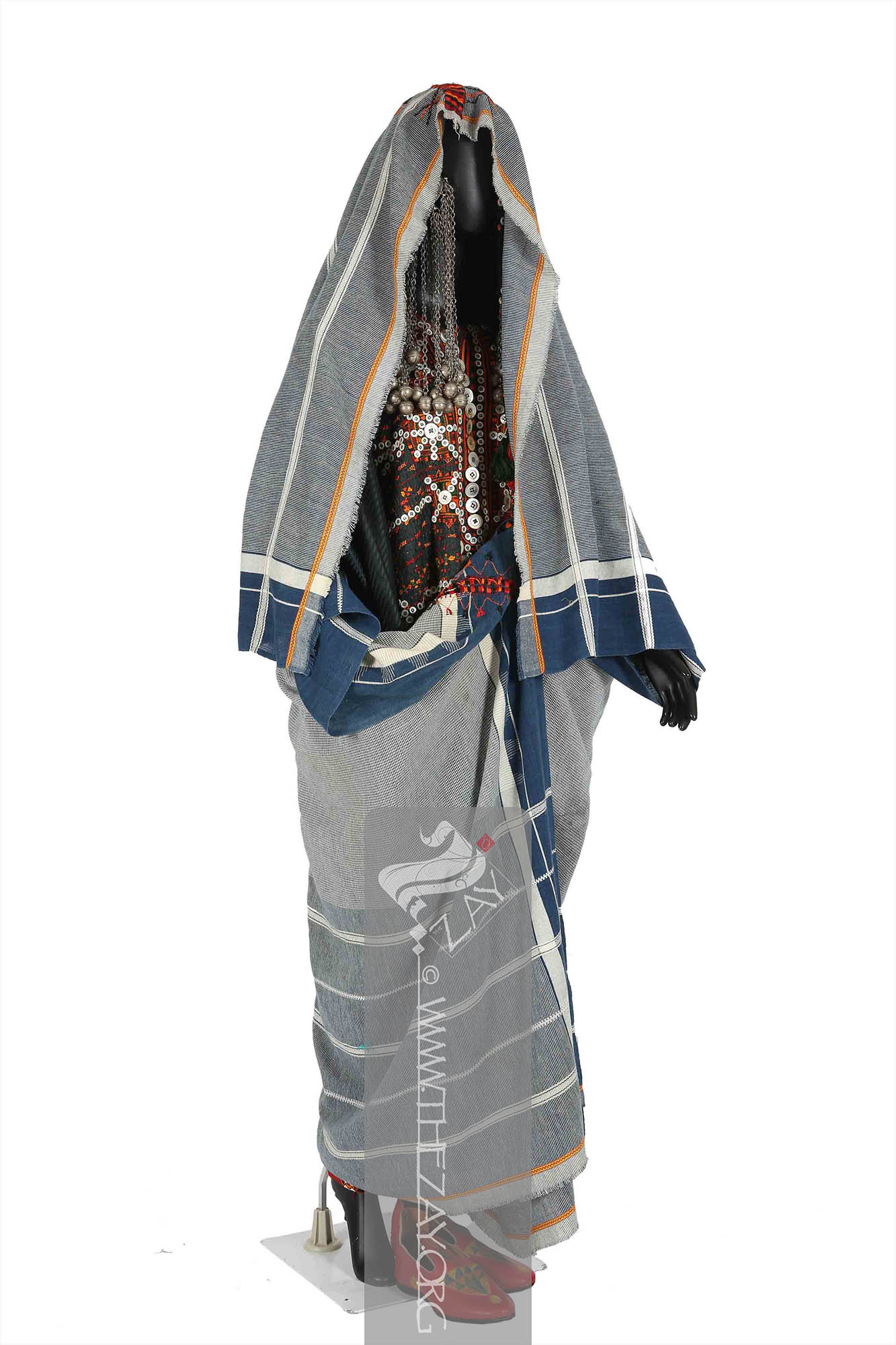
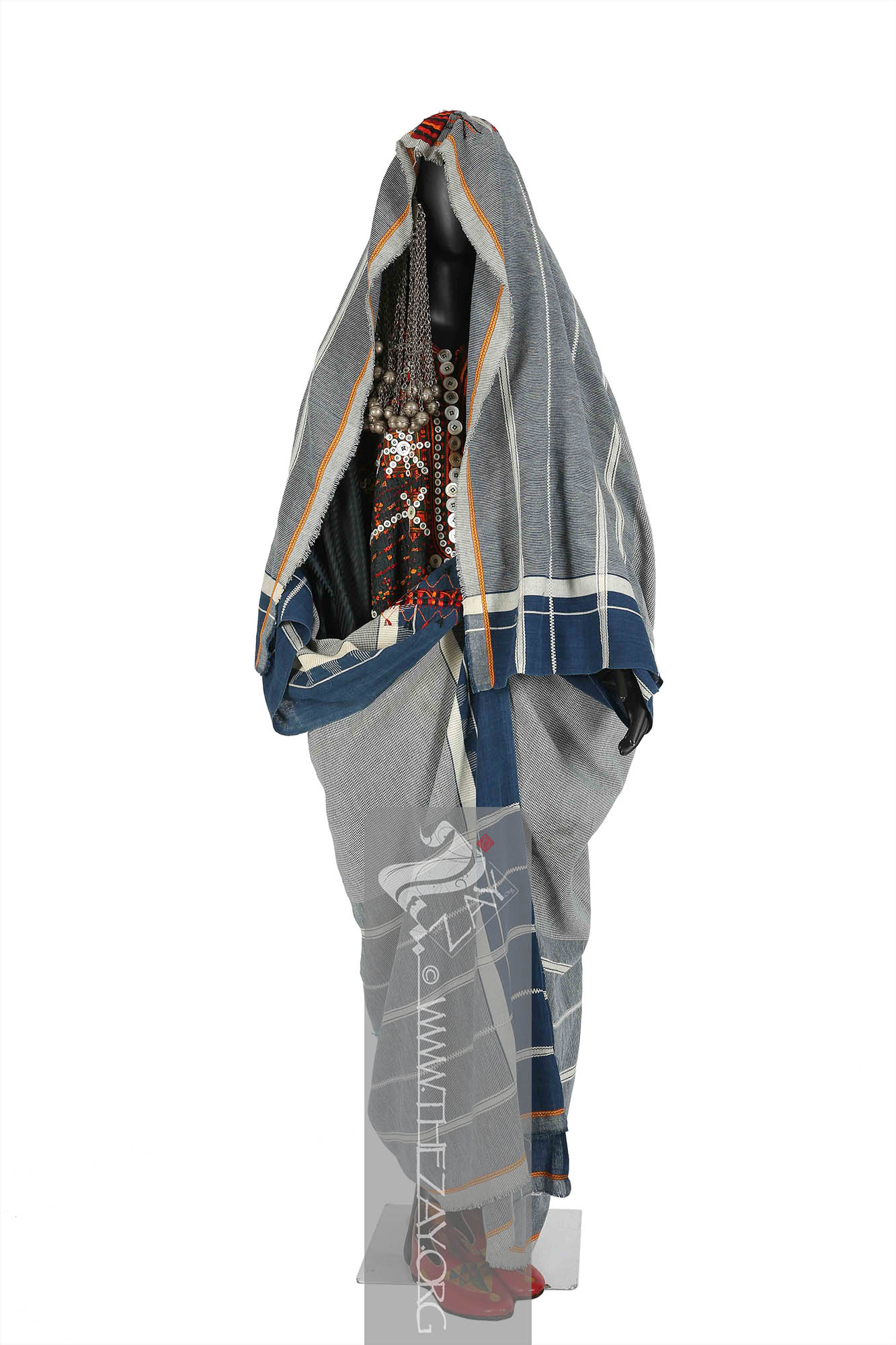

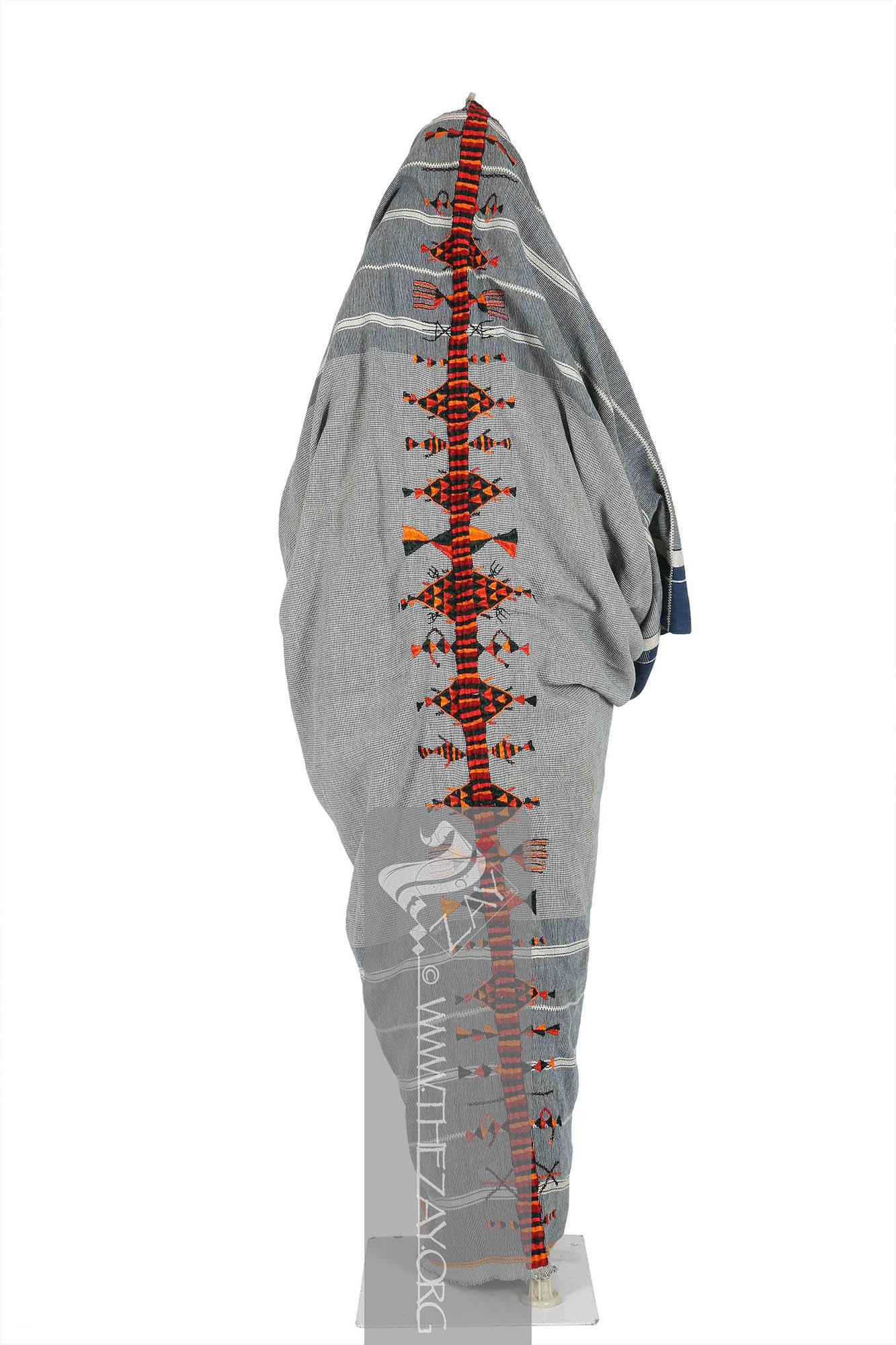

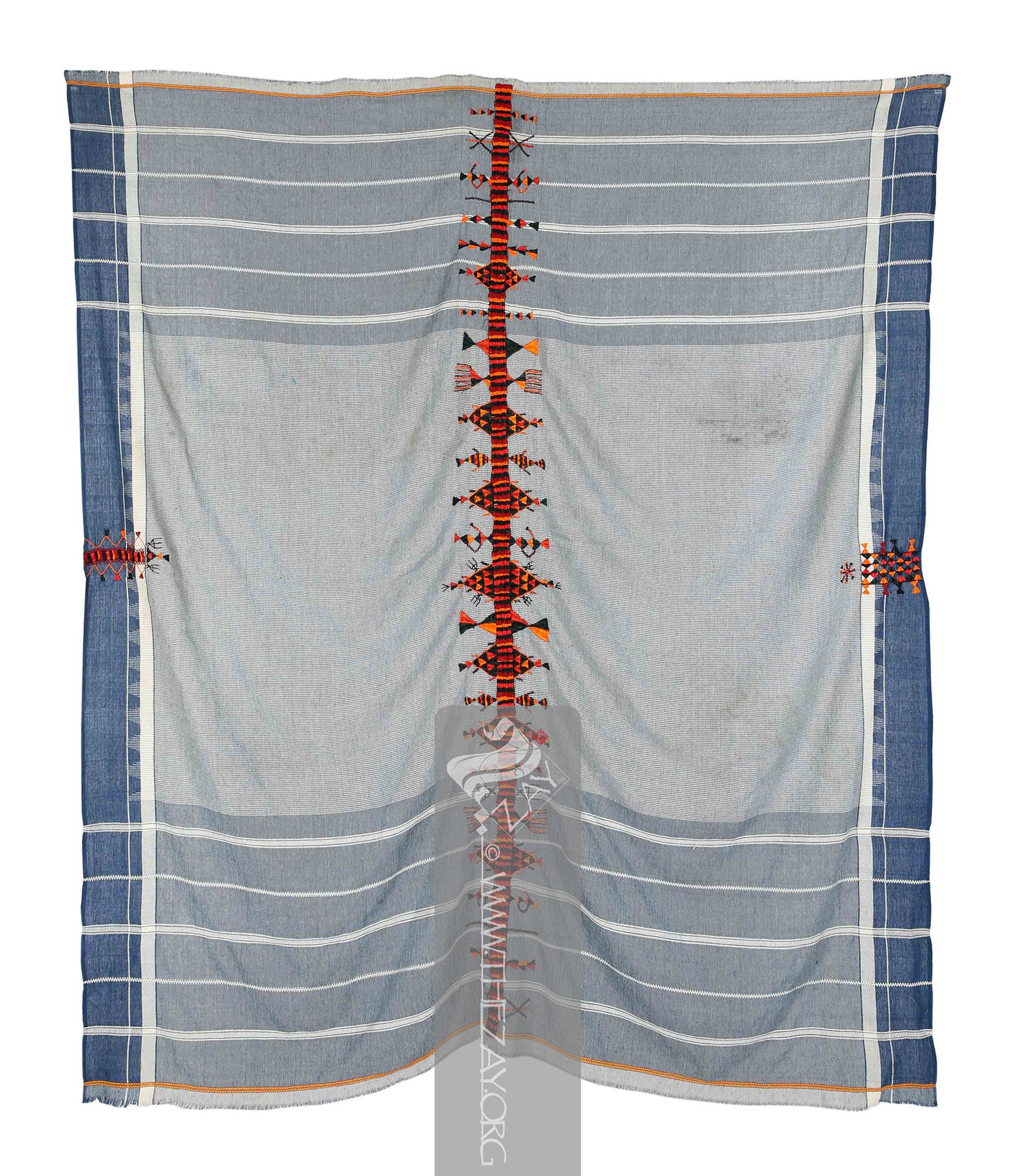


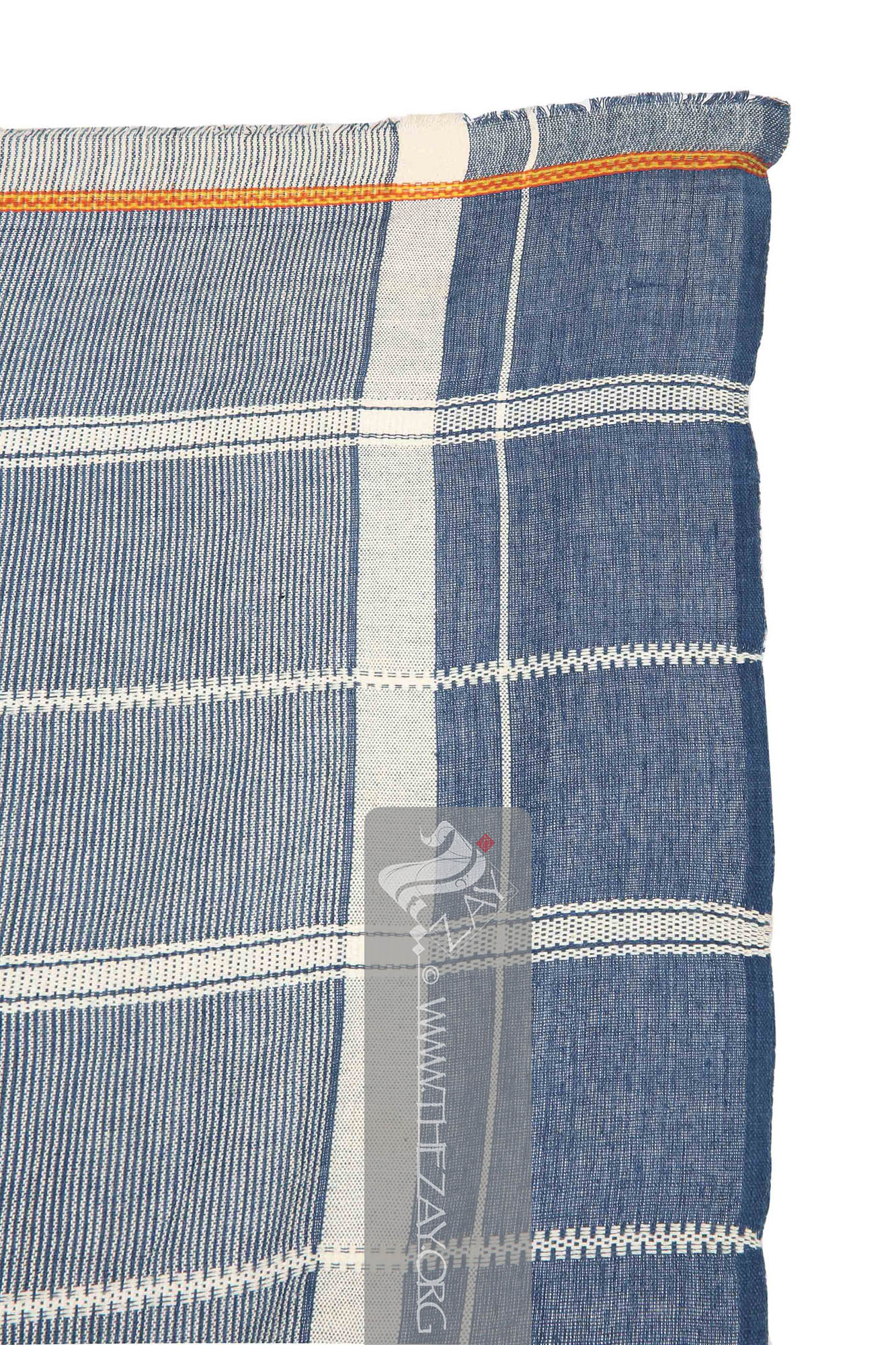
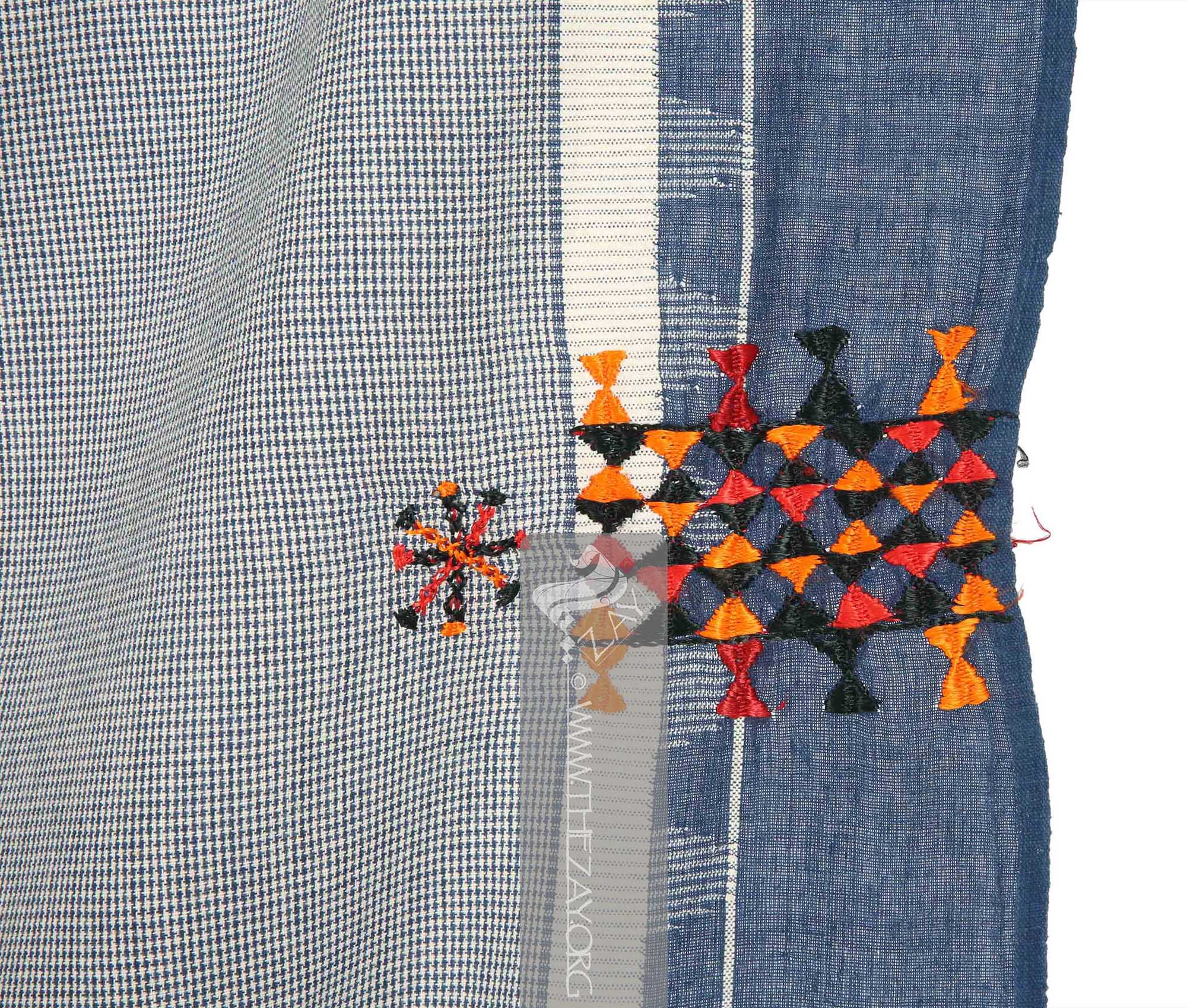
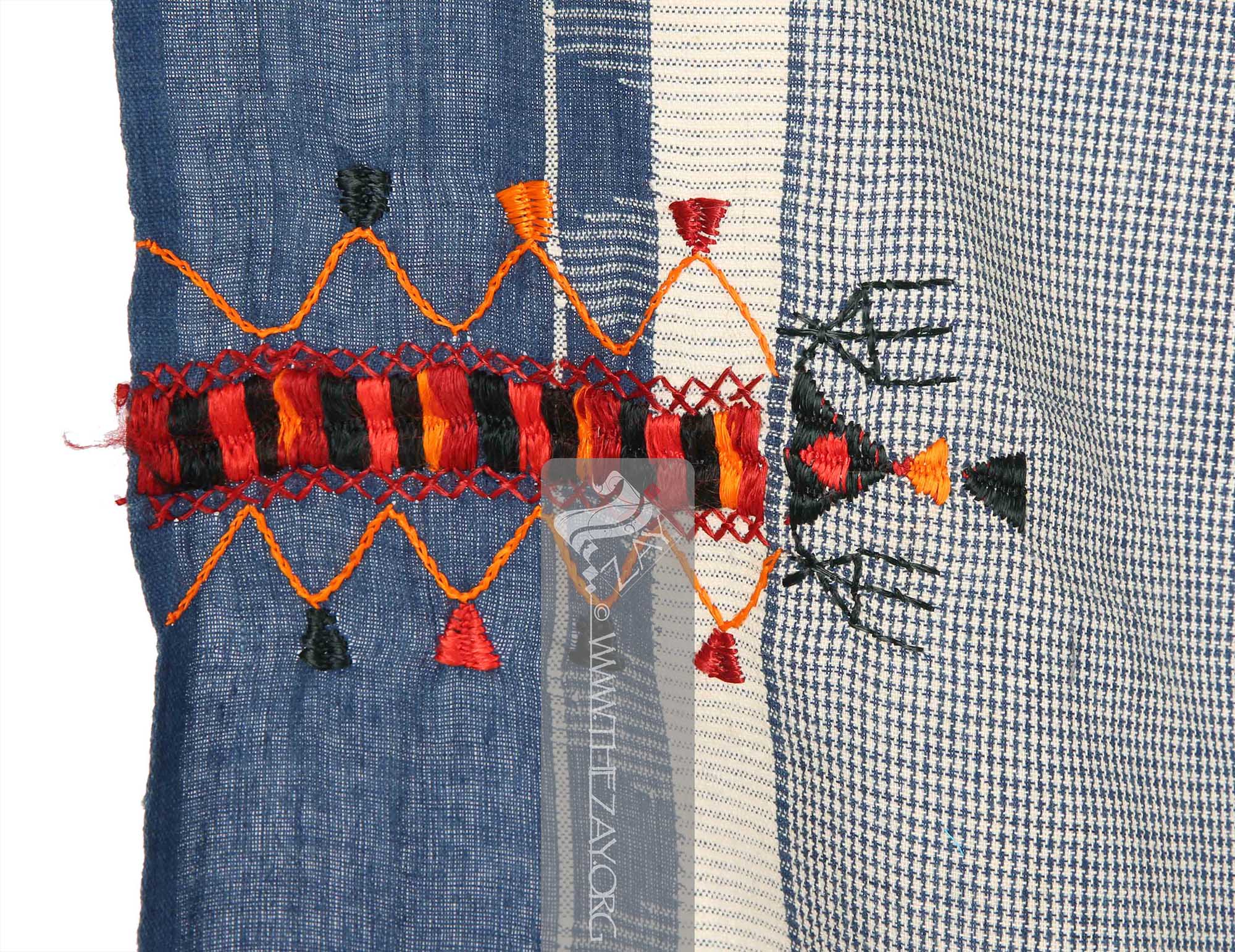
| Local Name | Tarfottet |
| Object Category | Headwear |
| Gender | Female |
| Date of object | c. 19th – 20th century |
| Place Of orgin | Egypt |
| Region | Egypt |
| Object Range | Egypt |
| Dimensions | Length: 174 cm Width: 200 cm |
| Materials | Silk Linen |
| Technique | Hand Embroidered Woven |
| Color | |
| Motif | Geometric |
| Provenance | Purchased, Anonymous, Egypt 2021 |
| Location | The Zay Zay: (Arabic: costume, Pl. azyaā’), a set of clothes in a style typical of a particular country or historical period. Initiative |
| Status | In Storage |
| ZI number | ZI2021.500954d EGYPT |
Object Note
Part of a lot with six more items (ZI2021.500954 EGYPT, ZI2021.500954a EGYPT, ZI2021.500954b EGYPT, ZI2021.500954c EGYPT, ZI2021.500954e EGYPT and ZI2021.500954f EGYPT) also in the collection.
Object History
This piece was purchased by Dr. Reem Tariq
Ṭariq: (Arabic; Synonym: tulle_bi_talli; talli; badla; khus_dozi ), series of small metal knots made on a woven net ground as embellishment. The term is commonly used in the Levant Arab region specifically in Lebanon. Ṭariq: (Arabic; Synonym: tulle_bi_talli; talli; badla; khus_dozi ), series of small metal knots made on a woven net ground as embellishment. The term is commonly used in the Levant Arab region specifically in Lebanon.
Originally part of the Shahira Mehrez collection, the piece was purchased by a previous collector who remains anonymous to The Zay Zay: (Arabic: costume, Pl. azyaā’), a set of clothes in a style typical of a particular country or historical period.. Ms Mehrez graciously guided Dr Reem and The Zay Zay: (Arabic: costume, Pl. azyaā’), a set of clothes in a style typical of a particular country or historical period. in sourcing the item from them for the benefit of The Zay Zay: (Arabic: costume, Pl. azyaā’), a set of clothes in a style typical of a particular country or historical period. Initiative.
Ms. Shahira Mehrez is recognised as one of Egypt's foremost costume historians and collectors, and she serves as an honorary advisor to The Zay Zay: (Arabic: costume, Pl. azyaā’), a set of clothes in a style typical of a particular country or historical period. Initiative. Born into an affluent Egyptian family during the British occupation, Ms. Mehrez was educated in French schools, with French often being the language spoken at home. Nevertheless, her family was committed to ensuring she learned Arabic and hired a religious teacher to help her memorise the Quran.
Ms. Mehrez is the author of Costumes of Egypt: The Lost Legacies and holds a postgraduate master's degree in Islamic art and architecture, a field she pursued after discovering her passion for Egyptian heritage and folklore, despite originally earning an undergraduate bachelor's degree in chemistry. She has been deeply dedicated to preserving Egyptian handicrafts, folklore, and traditional costumes, spanning from the ancient Egyptian civilisation to the present day. In her efforts to expand her research, Ms. Mehrez has collected various traditional costumes from twelve different regions across Egypt.
Object Features
This is a women’s rectangular outer wrap (tarfottet) panel of woven linen featuring embroidered embellishment in the centre.
It is a (selvedge Selvedge: (English: Self-finished edge or self-edge: a dialect forming transition), an edge produced on woven fabric during manufacture that prevents it from unravelling. Traditionally the term selvage applied to only loom woven fabric, presently it could be applied to flat knitted fabric too. ) to selvedge Selvedge: (English: Self-finished edge or self-edge: a dialect forming transition), an edge produced on woven fabric during manufacture that prevents it from unravelling. Traditionally the term selvage applied to only loom woven fabric, presently it could be applied to flat knitted fabric too. woven panel primarily in blue and ivory, with a broad central panel embellished in (blanket_stitch Blanket_stitch: A basic sewing stitch used to secure the edges of fabric or create decorative borders by looping the thread over the edges of blankets, quilts, and other fabrics and pulling it through, forming a series of evenly spaced stitches that resemble a chain. ) style embroidery in red, (coral Coral: (Greek: korallion, probably from Hebrew: goral – small pebbles), is a pale to medium shade of pink with orange or peach undertones, resembling the colour of certain species of coral.), orange, and black silk floss Floss: (Old French: flosche – nap of velvet), is a type of silk fibre obtained from the cocoons of wild silkworms. It is characterized by its long, fluffy fibers that are not tightly woven, making it ideal for use in various textile applications such as embroidery, lace-making, and sewing. threads with horizontal panels of several geometric shapes – rhomboidal, triangular – emulating fish, and candelabra. The central panel runs vertically along the field of the piece.
More Info
Often part of women’s traditional costume from Siwa, Egypt, this kind of wrap is usually decorated with matching patterns as the rest of the outfit. Women would usually use another wrap underneath the tarfottet to cover their head and face, and would often pair it with a prominent and statement piece of jewellery of Berber origin.
The taroffet veil originates from the Nile Valley, specifically in the village of Kerdassa near Cairo. For centuries, artisans from this village have specialised in crafting these veils primarily for the people of Siwa. However, the taroffet has also found its way into the bustling streets of Cairo and various regions along the Nile. In Siwa, these veils are adorned with intricate embroidery, reminiscent of the ornate designs found on ceremonial attire.
Links